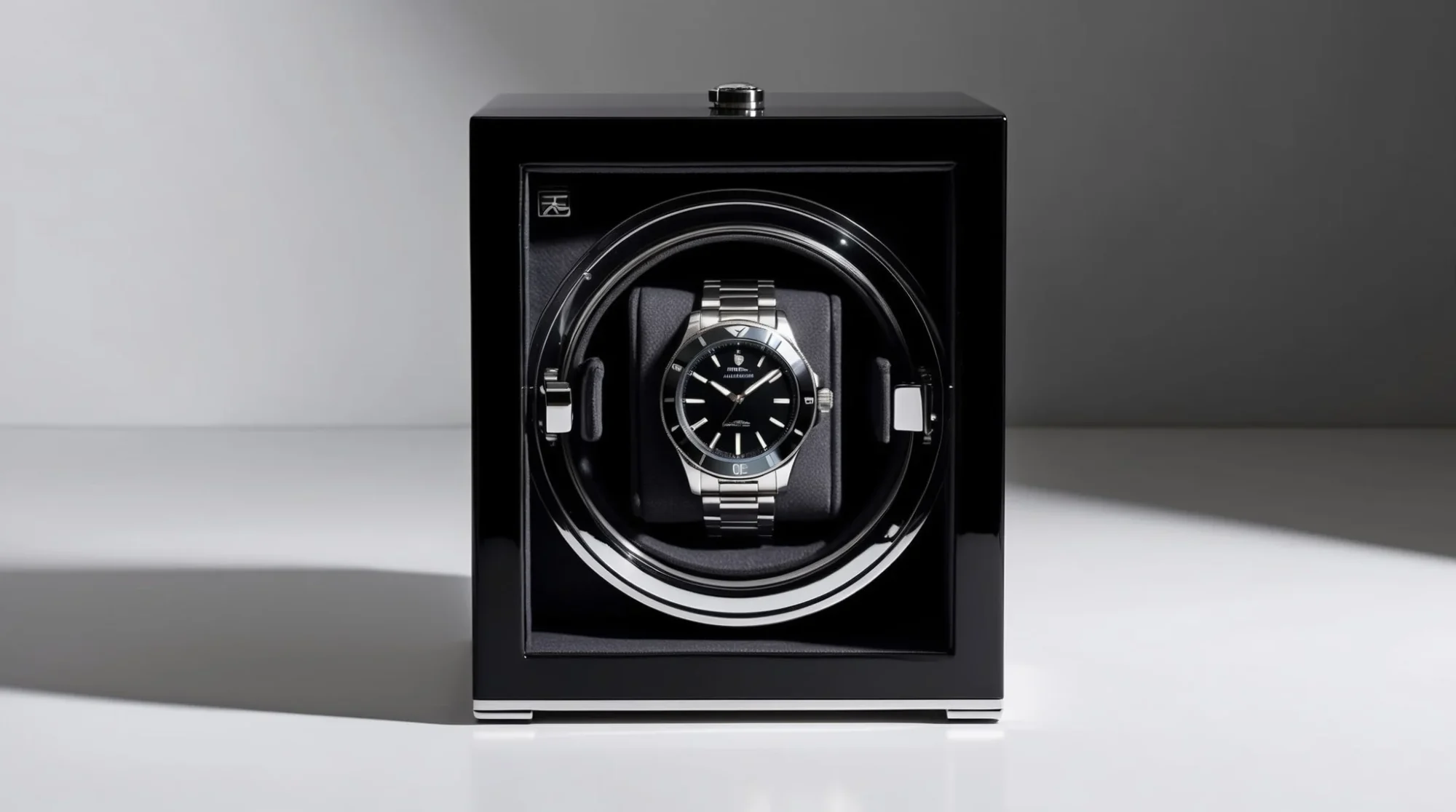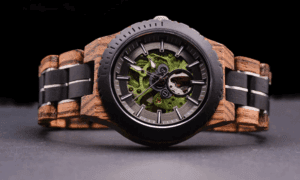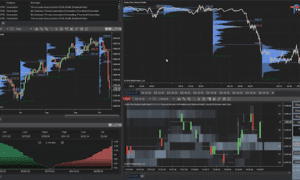Your watch winder represents a significant investment in protecting even more valuable timepieces. While many owners focus exclusively on their watches’ maintenance, neglecting the winder itself can lead to catastrophic failures that damage both the device and your precious collection.
Professional horologists understand that a well-maintained watch winder can operate flawlessly for decades. The key lies in understanding that your winder is a precision instrument requiring the same attention you’d give your finest timepieces.
This comprehensive guide reveals insider techniques used by luxury watch service centers and collectors who’ve maintained their winders for over 20 years without major repairs.
Table of Contents
- Introduction to Watch Winder Care
- Understanding Watch Winder Mechanics
- Daily Maintenance Techniques
- Common Maintenance Mistakes to Avoid
- Troubleshooting Watch Winder Issues
- Extending Your Watch Winder’s Lifespan
- Professional Maintenance Tips
Understanding Watch Winder Mechanics
The Heart of Your Winder: Motor Systems
Modern watch winders employ three primary motor types, each requiring specific maintenance approaches:
Mabuchi Motors: Found in premium winders, these Japanese motors feature precision-machined components requiring minimal lubrication every 18-24 months. They operate at whisper-quiet levels when properly maintained.
Stepper Motors: Common in programmable winders, these motors use electromagnetic pulses for precise control. Their maintenance focuses on electrical connections and dust prevention rather than lubrication.
Synchronous Motors: Used in basic winders, these AC-powered motors require regular inspection of their reduction gears and timing mechanisms.
Gearing Systems and Transmission
The reduction gearing system translates high-speed motor rotation into the slow, consistent movement your watches require. Understanding this system helps identify maintenance needs before catastrophic failures occur.
Planetary Gears: Premium winders use these compact, efficient systems that distribute wear across multiple contact points. Inspect for even wear patterns during monthly maintenance.
Worm Gears: Common in budget winders, these systems concentrate wear on specific points, requiring more frequent lubrication and inspection.
Power Management Circuitry
Modern winders incorporate sophisticated power management systems that prevent overwinding and optimize battery life. These circuits require specific maintenance protocols often overlooked by generic guides.
Daily Maintenance Techniques
The Professional’s 60-Second Check
Implement this daily inspection routine used by high-end watch retailers:
Visual Inspection (15 seconds): Scan for dust accumulation, loose components, or changes in LED display behavior. Look for subtle signs like slight movement irregularities or unusual reflections on glass surfaces.
Auditory Assessment (20 seconds): Listen for changes in motor sound patterns. A properly maintained winder produces consistent, rhythmic sounds. New squeaks, grinding, or intermittent noises indicate emerging issues.
Functional Verification (25 seconds): Observe one complete rotation cycle. The movement should be smooth and consistent, without hesitation or jerky motions.
Environmental Monitoring
Professional collectors maintain detailed environmental logs. Track these critical parameters:
Temperature Stability: Maintain 65-72°F (18-22°C) with minimal fluctuation. Sudden temperature changes cause expansion/contraction cycles that stress internal components.
Humidity Control: Keep relative humidity between 35-45%. Higher levels promote corrosion, while lower levels increase static electricity buildup.
Air Quality: Position winders away from cooking areas, fireplaces, and high-traffic zones where airborne particles accumulate.
Power Supply Optimization
Battery-Powered Units: Use only manufacturer-specified batteries. Generic alternatives often have inconsistent voltage outputs that stress motor control circuits.
AC-Powered Models: Employ a dedicated surge protector with EMI filtering. Power fluctuations are the leading cause of premature electronic failures.
Common Maintenance Mistakes to Avoid
Over-Lubrication: The Silent Killer
Many owners assume more lubrication equals better performance. This catastrophic mistake causes:
Lubricant Migration: Excess oil travels beyond intended areas, contaminating electrical contacts and optical sensors.
Dust Magnetism: Over-lubricated surfaces attract and hold dust particles, creating abrasive compounds that accelerate wear.
Temperature Sensitivity: Excess lubricants become viscous in cold conditions, causing startup failures and motor strain.
Incorrect Cleaning Solutions
Alcohol-Based Cleaners: These dissolve protective coatings on internal components and can damage LCD displays.
Abrasive Polishes: Even mild abrasives remove protective anodized finishes, exposing underlying metals to corrosion.
Water-Based Solutions: Moisture infiltration causes immediate electronic failures and long-term corrosion issues.
Mechanical Stress Factors
Improper Loading: Forcing watches into holders stresses the winder’s mounting system and can damage both the watch and winder.
Vibration Exposure: Placing winders on unstable surfaces or near appliances creates micro-vibrations that accelerate internal wear.
Thermal Cycling: Frequent temperature changes cause expansion/contraction cycles that fatigue internal components.
Troubleshooting Watch Winder Issues
Motor Performance Problems
Symptom: Intermittent stopping during operation Diagnosis: Check for dust accumulation on optical sensors or magnetic encoder wheels Solution: Use compressed air to clear sensors, followed by isopropyl alcohol on cotton swabs for stubborn deposits
Symptom: Increasing noise levels over time Diagnosis: Worn motor bearings or contaminated lubricants Solution: Professional motor replacement typically required; temporary fix involves specific lubricant application
Symptom: Irregular rotation speeds Diagnosis: Failing power management circuitry or worn gearing Solution: Voltage testing required; may need professional circuit board repair
Electronic System Failures
Display Issues: Flickering or dim displays indicate failing power supplies or loose connections. Check battery contacts first, then internal wiring harnesses.
Programming Errors: If custom settings revert to defaults, the memory backup battery may need replacement. This requires professional service for most models.
Sensor Malfunctions: Motion sensors that fail to activate indicate contamination or component failure. Professional diagnosis required to avoid warranty voiding.
Mechanical Complications
Gear Slippage: Worn gears cause inconsistent winding. Identify by marking rotation points and checking for proper alignment after 24 hours.
Mounting System Failures: Loose or damaged watch holders stress the entire mechanism. Replace damaged components immediately to prevent cascading failures.
Case Integrity Issues: Warped cases or loose joints compromise the protective environment. Professional repair prevents moisture infiltration and component damage.
Extending Your Watch Winder’s Lifespan
The 10-Year Maintenance Protocol
Professional collectors following this protocol regularly achieve 15-20 year operational lifespans:
Years 1-3: Focus on environmental stability and basic maintenance. Establish consistent operating conditions and monitor for early wear indicators.
Years 4-7: Implement preventive component replacement. Replace batteries proactively, refresh lubricants, and update programming as needed.
Years 8-10: Conduct comprehensive mechanical inspections. This period often requires professional service to maintain optimal performance.
Seasonal Maintenance Schedules
Spring Preparation: After winter’s low humidity, inspect for static damage and refresh moisture control systems.
Summer Care: Increased cooling loads stress power supplies. Monitor for overheating and ensure adequate ventilation.
Fall Readiness: Prepare for the heating season by checking for temperature stability and updating environmental controls.
Winter Protection: Cold weather affects battery performance and lubricant viscosity. Adjust operating parameters accordingly.
Component Longevity Strategies
Motor Preservation: Rotate operation between multiple winders to reduce individual unit stress. This strategy, used by professional dealers, can double motor life. Understanding how long should a watch winder last helps you set realistic expectations and plan maintenance schedules accordingly.
Electronic Protection: Use dedicated circuits to prevent power fluctuations. Consider uninterruptible power supplies for critical collections, especially when protecting high-value timepieces with the best watch winder systems available.
Mechanical Maintenance: Implement graduated maintenance intervals based on usage patterns. Light users can extend intervals, while heavy users need more frequent attention.
Professional Maintenance Tips
Service Center Techniques
Ultrasonic Cleaning: Professional services use ultrasonic baths to remove contamination without disassembly. This technique extends component life significantly.
Precision Lubrication: Specific lubricants for different components prevent cross-contamination and optimize performance.
Calibration Verification: Professional equipment verifies timing accuracy and rotation consistency beyond consumer capabilities.
When to Seek Professional Help
Complex Repairs: Motor replacement, circuit board repair, and mechanical overhauls require specialized tools and expertise.
Warranty Considerations: Professional maintenance preserves warranty coverage and ensures proper documentation.
Performance Optimization: Professional services can enhance performance beyond factory specifications through calibration and component upgrades.
Cost-Benefit Analysis
Repair vs. Replace: Generally, repairs costing more than 60% of replacement value aren’t economical. However, consider sentimental value and collection integration.
Preventive Maintenance ROI: Professional maintenance every 3-5 years typically costs 10-15% of replacement value while extending life by 5-10 years.
Collection Value Protection: A well-maintained winder protects watches worth many times its own value, making maintenance investments highly justified.
Conclusion
The techniques outlined in this guide represent decades of collective experience from professional horologists, luxury watch dealers, and serious collectors. By implementing these strategies, you’ll not only extend your winder’s life but also ensure your valuable timepieces receive the consistent, reliable care they deserve.
Professional maintenance isn’t just about keeping your winder running; it’s about preserving the precision engineering that makes automatic watches one of humanity’s most remarkable mechanical achievements. Treat your winder with the respect it deserves, and it will serve your collection faithfully for decades.



































